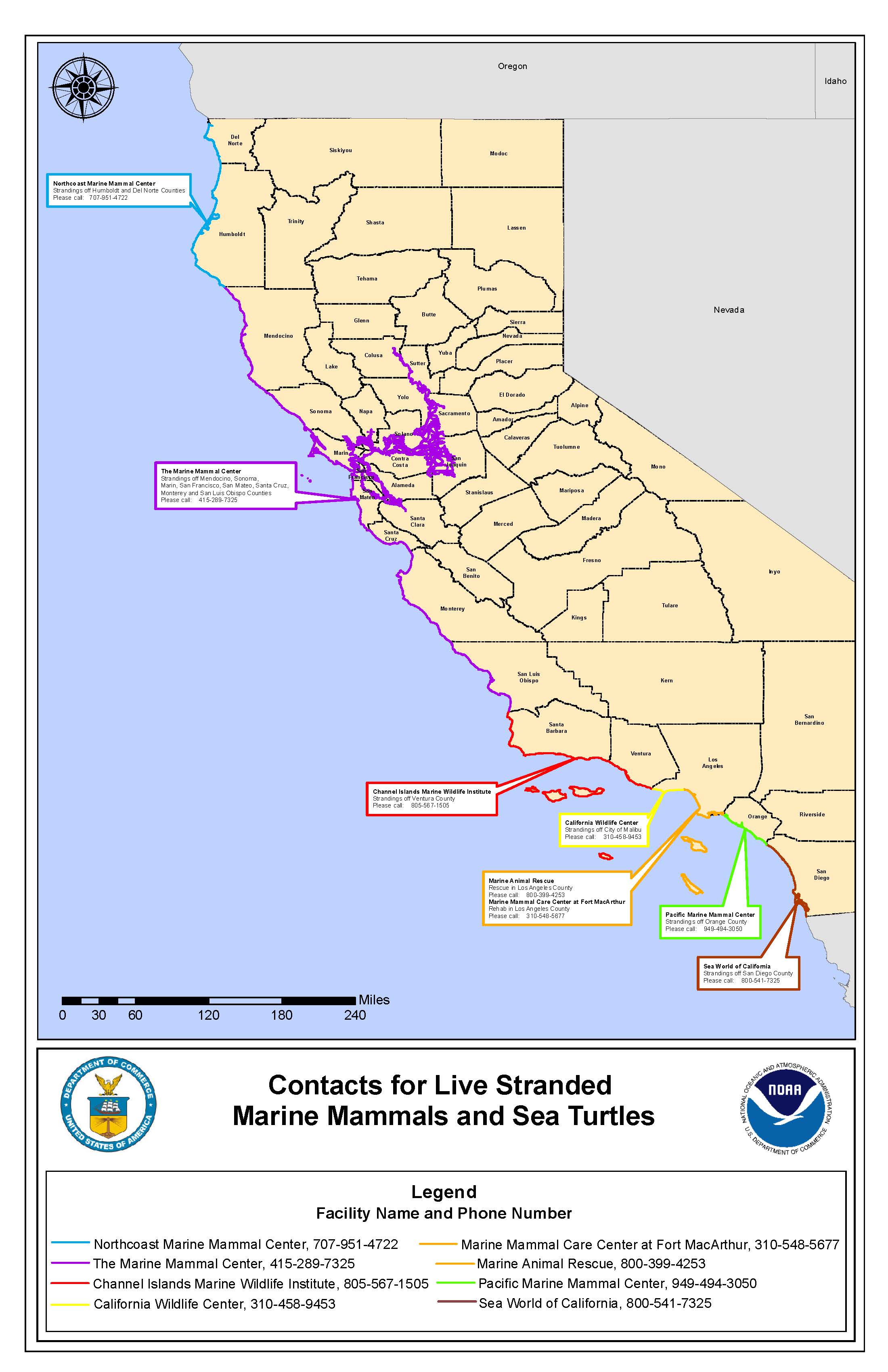Pseudo-nitzschia - C-HARM tells us where conditions are suitable for Pseudo-nitzschia spp. (all size classes) to grow well and where they might be more likely to produce domoic acid. In October, the probability of a Pseudo-nitzschia spp. bloom was still high all along the coast with low offshore probabilities in the Southern California Bight. Time series of the Harmful Algal Bloom Monitoring and Alert Program (HABMAP) data are plotted below for all of 2018 through November to give a seasonal perspective. For the month of November, these data show some peaks in Pseudo-nitzschia abundance early in the month at most sites where we have data. The smaller ("delicatissima") size class of Pseudo-nitzschia reached bloom levels at Stearns Wharf in Santa Barbara and Newport Pier. The highest CDPH measurements of Pseudo-nitzschia were found in San Diego, Los Angeles, San Luis Obispo, outside Golden Gate, and in Humboldt County.
Domoic Acid - C-HARM predicted the highest likelihood of particulate domoic acid (pDA) production in the Southern CA Bight and the offshore region of central CA, and even higher probabilities in the nearshore zone of the North Coast than for October. Cellular domoic acid (cDA) predictions, which should tell us where Pseudo-nitzschia cells are likely to be most toxic on a per-cell basis were elevated north of Pt. Conception, particularly the central and north CA coasts. The latter is consistent with the delay of the commercial Dungeness crab fishery in counties north of San Francisco, e.g. Sonoma and Humboldt Counties and the shellfish advisory in Humboldt County. Sea lion strandings from DA toxicosis recorded by The Marine Mammal Center in Sausalito went down from five animals in October to four animals in November, all from the central CA coastline. It is difficult to know in which offshore or nearshore environment the animal acquired the DA, but given the elevated DA probabilities offshore central CA (and particularly cellular DA), it is likely they were feeding offshore.
Alexandrium - Much like the trend in the time series from the Harmful Algal Bloom Monitoring and Alert Program (HABMAP) data into October, Alexandrium spp. percent composition from CDPH showed no acitivty in November, and the HABMAP data were consistent with that. There have been no PSP alerts from CDPH or CDFW.
Mean Probability of Pseudo-nitzschia Bloom for Nov. 2018
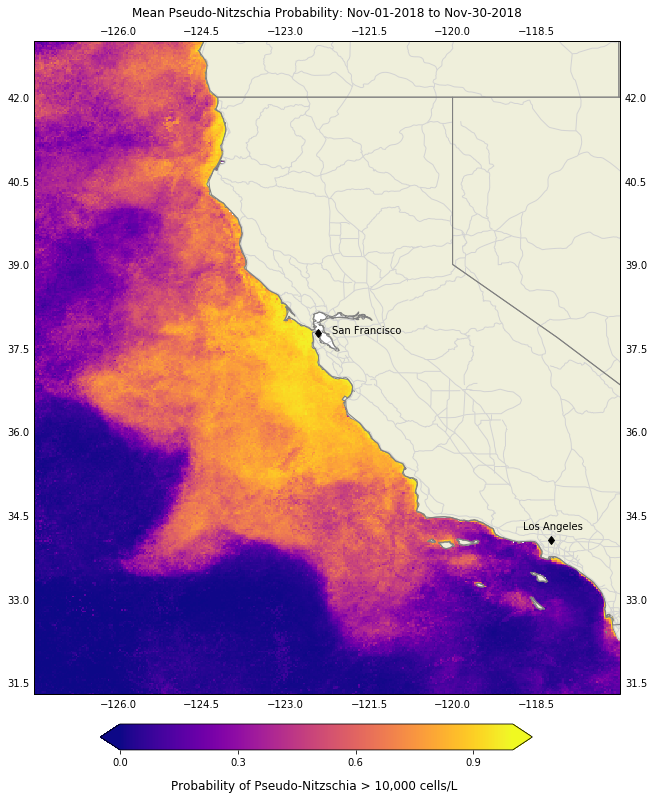
Mean Probability of Particulate Domoic Acid for Nov. 2018
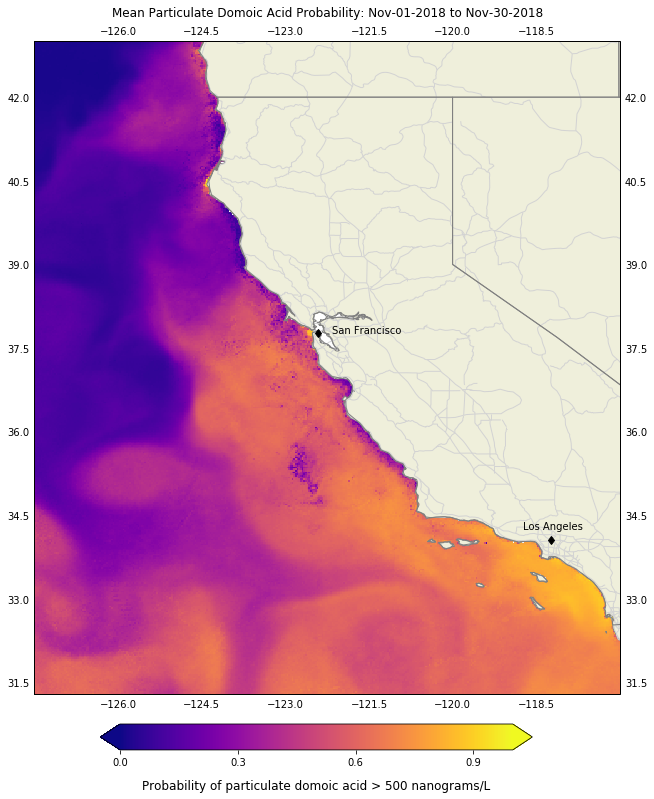
Mean Probability of Cellular Domoic Acid for Nov. 2018
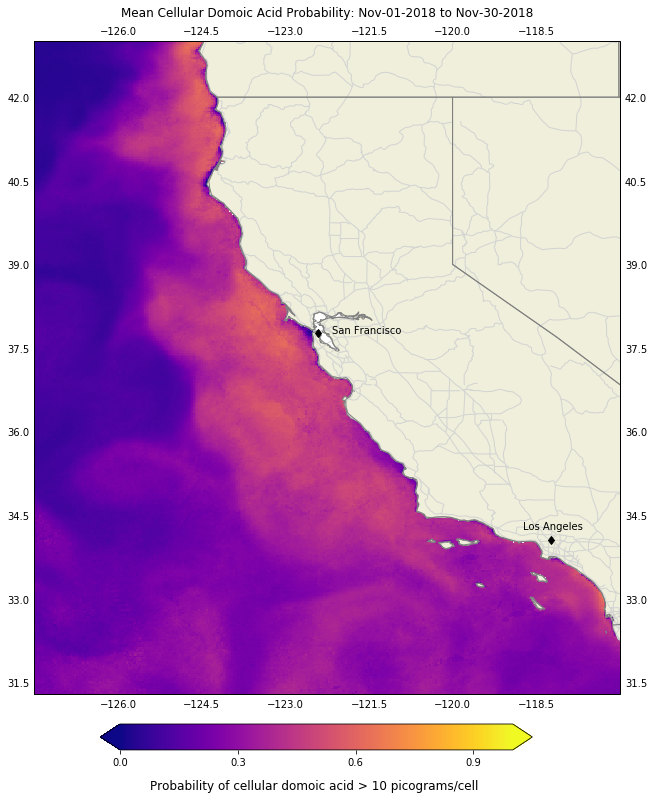
HABMAP Monitoring Sites
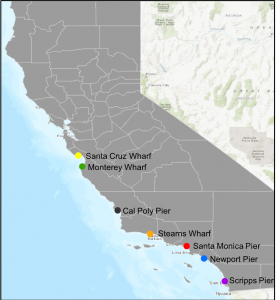
Note that data for some stations are not shown because they are not yet recorded in the public HABMAP archive, e.g. Scripps Pier data are not publicly available at this time as they undergo a rigorous quality control analysis.
Differentiating Pseudo-nitzschia species by light microscopy is difficult. For this reason, Pseudo-nitzschia "seriata" does not refer to an actual species but rather the larger size class of Pseudo-nitzschia, which is generally a more toxigenic group of species. Alternatively, Pseudo-nitzschia "delicatissima" refers to the smaller size class that is generally non-toxigenc. The dashed line on the plots demarcates the 10,000 cells/L "bloom" threshold designated here for Pseudo-nitzschia populations only.
Santa Cruz Municipal Wharf
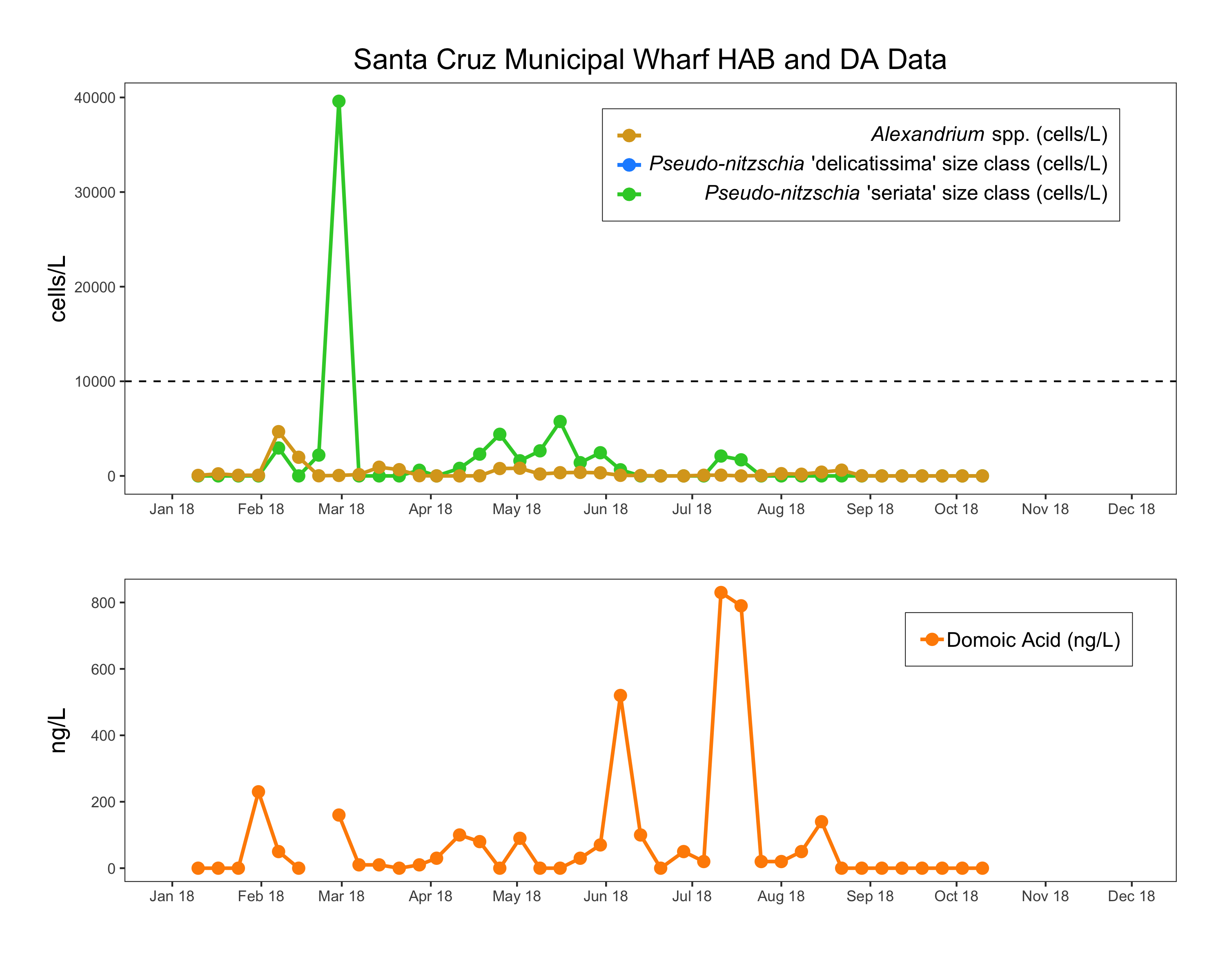
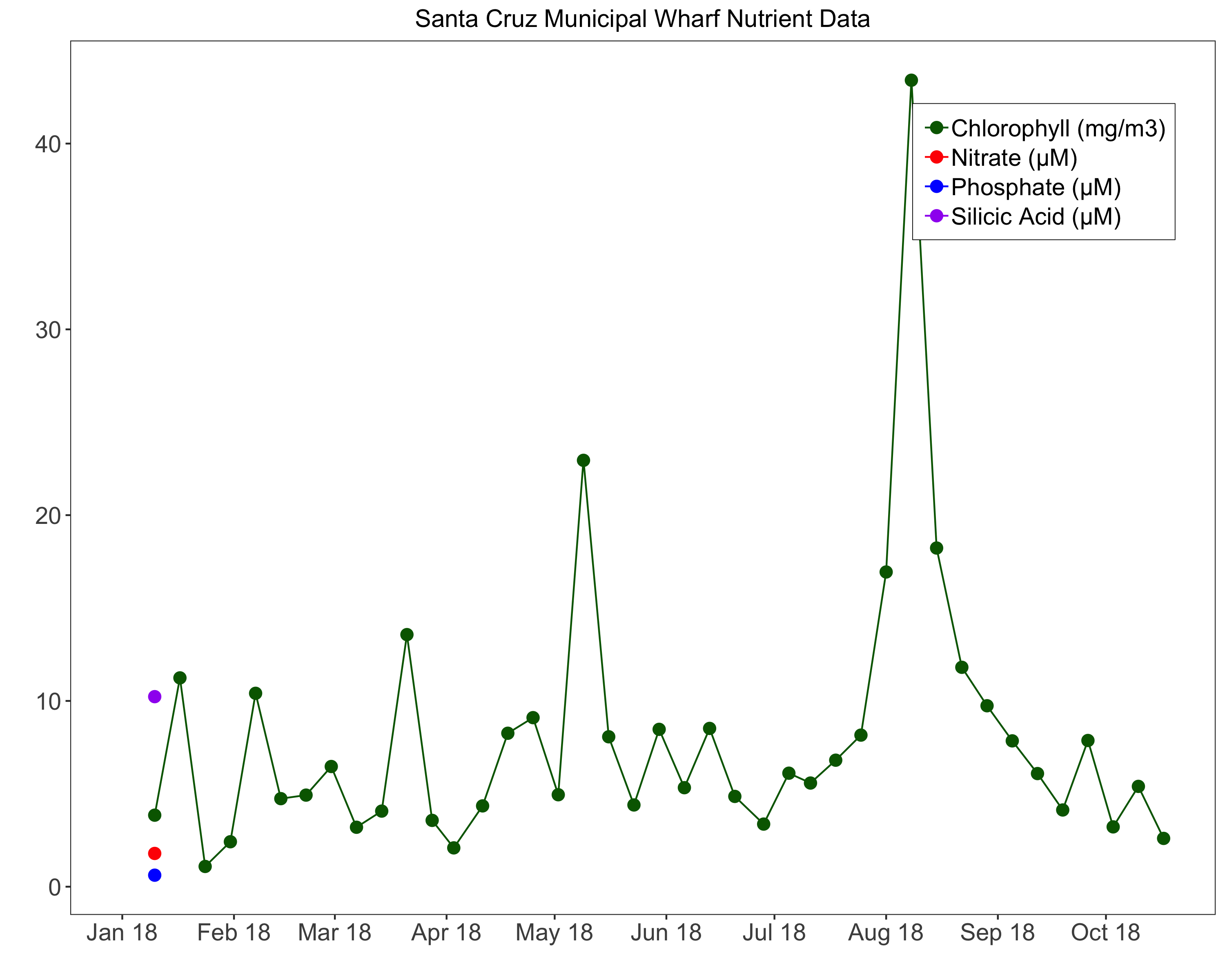
Cal Poly Pier
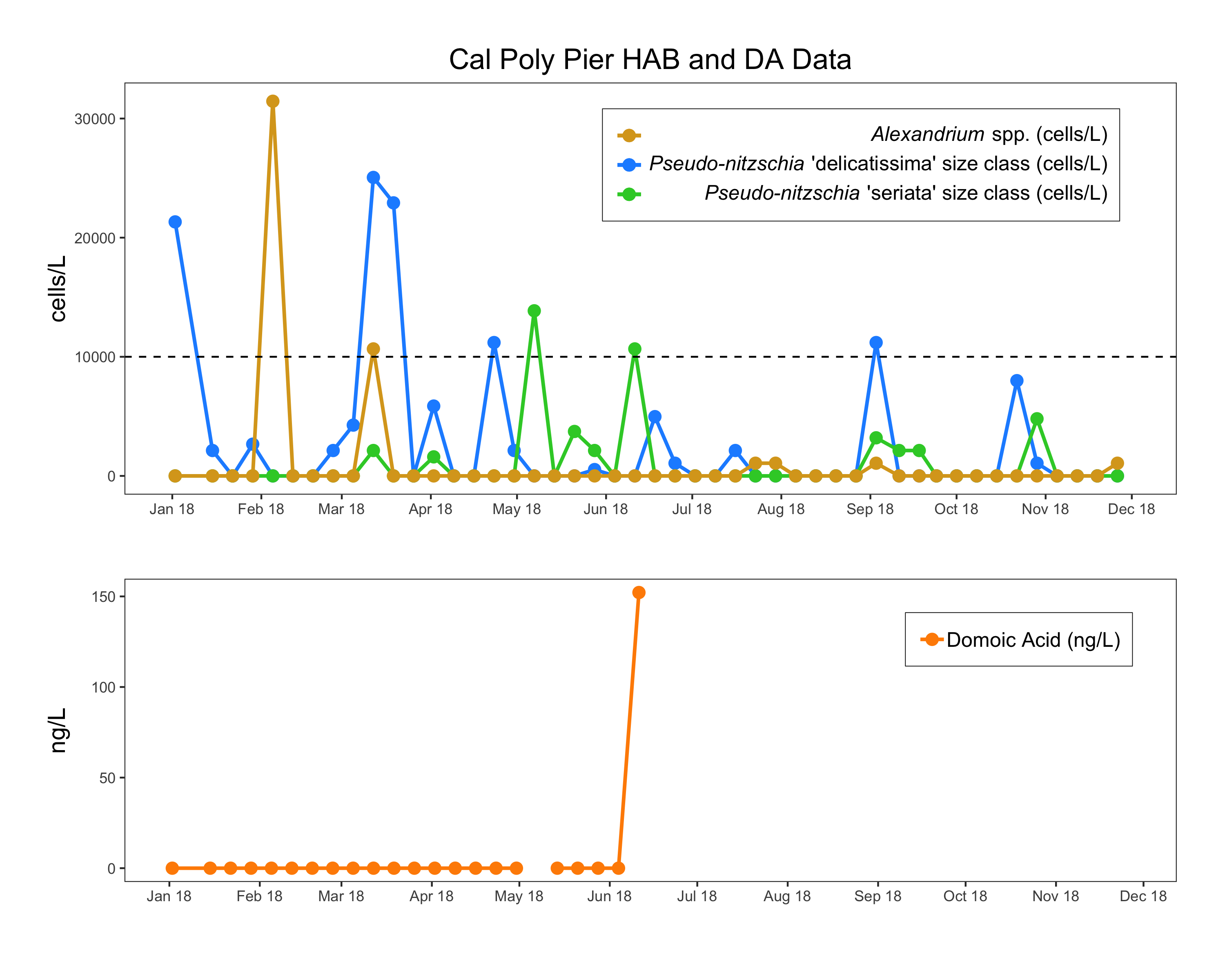
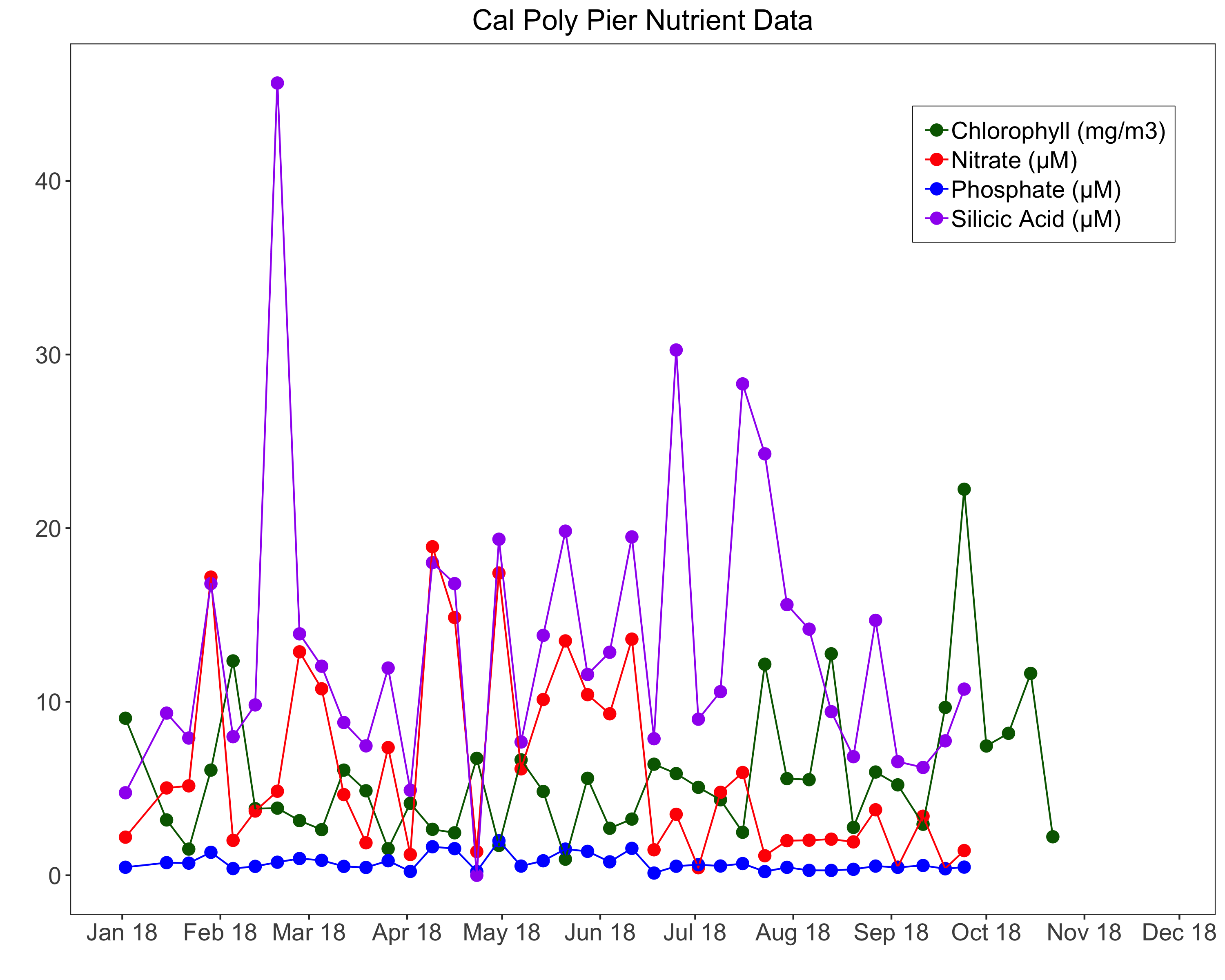
Stearns Wharf
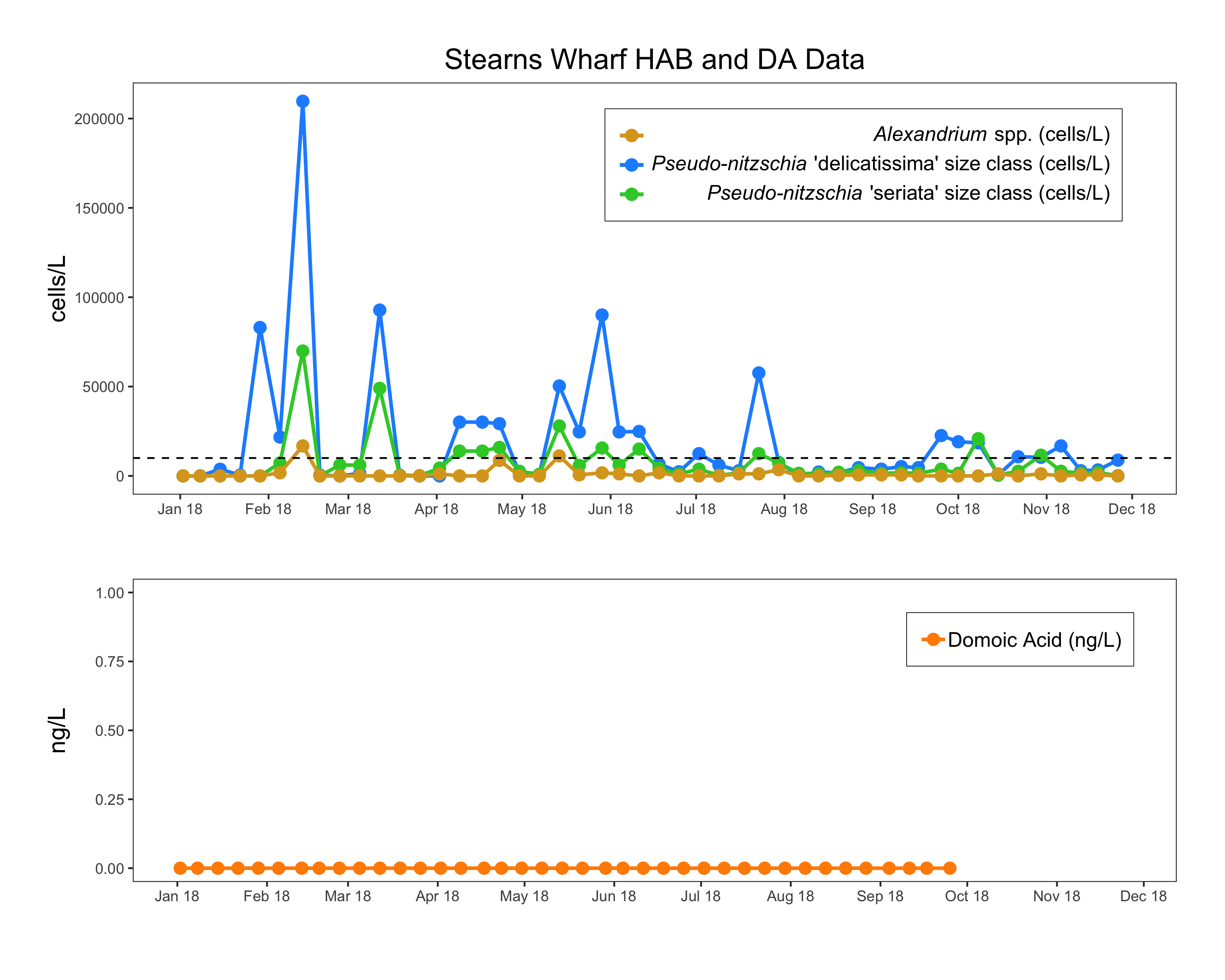
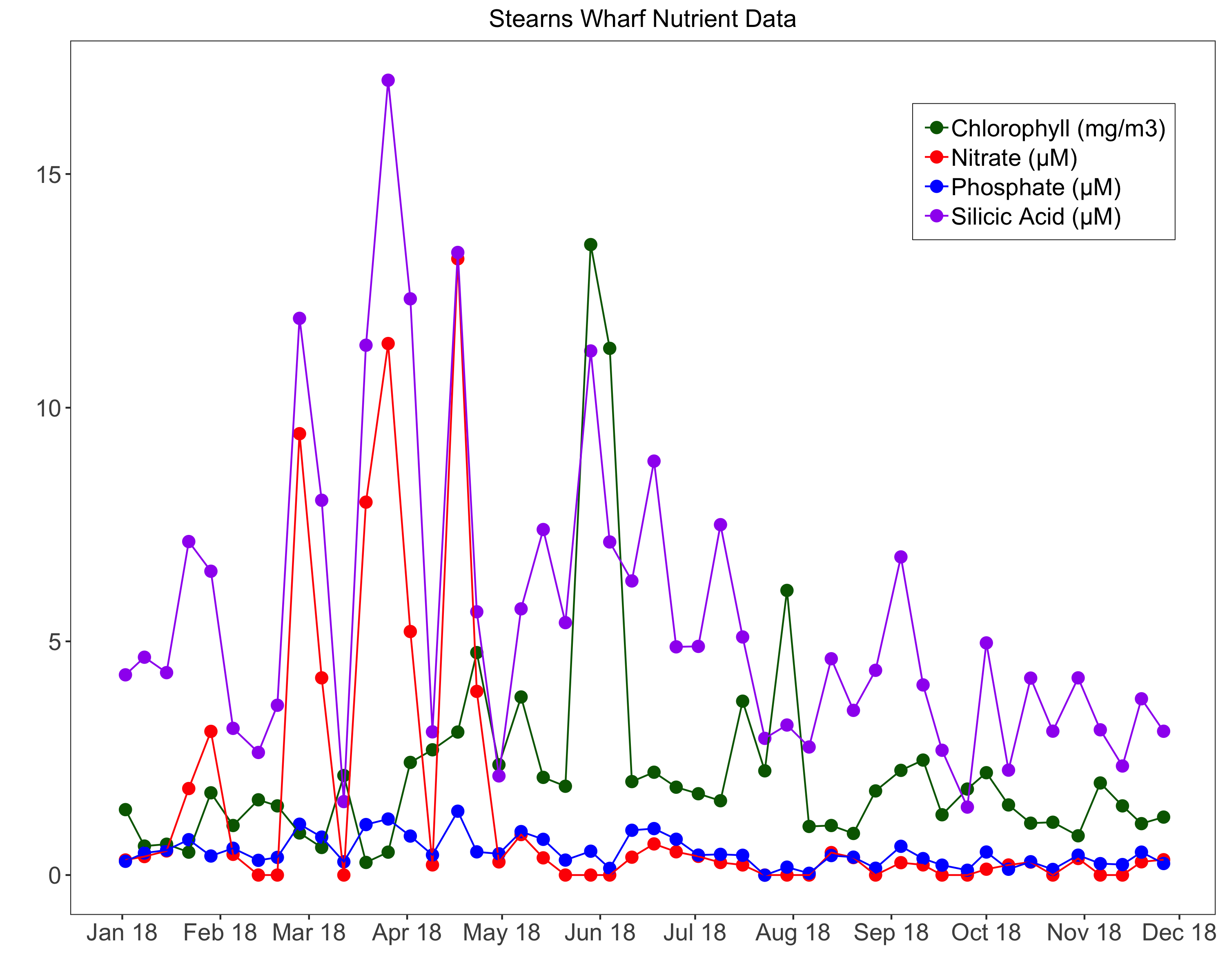
Santa Monica Pier
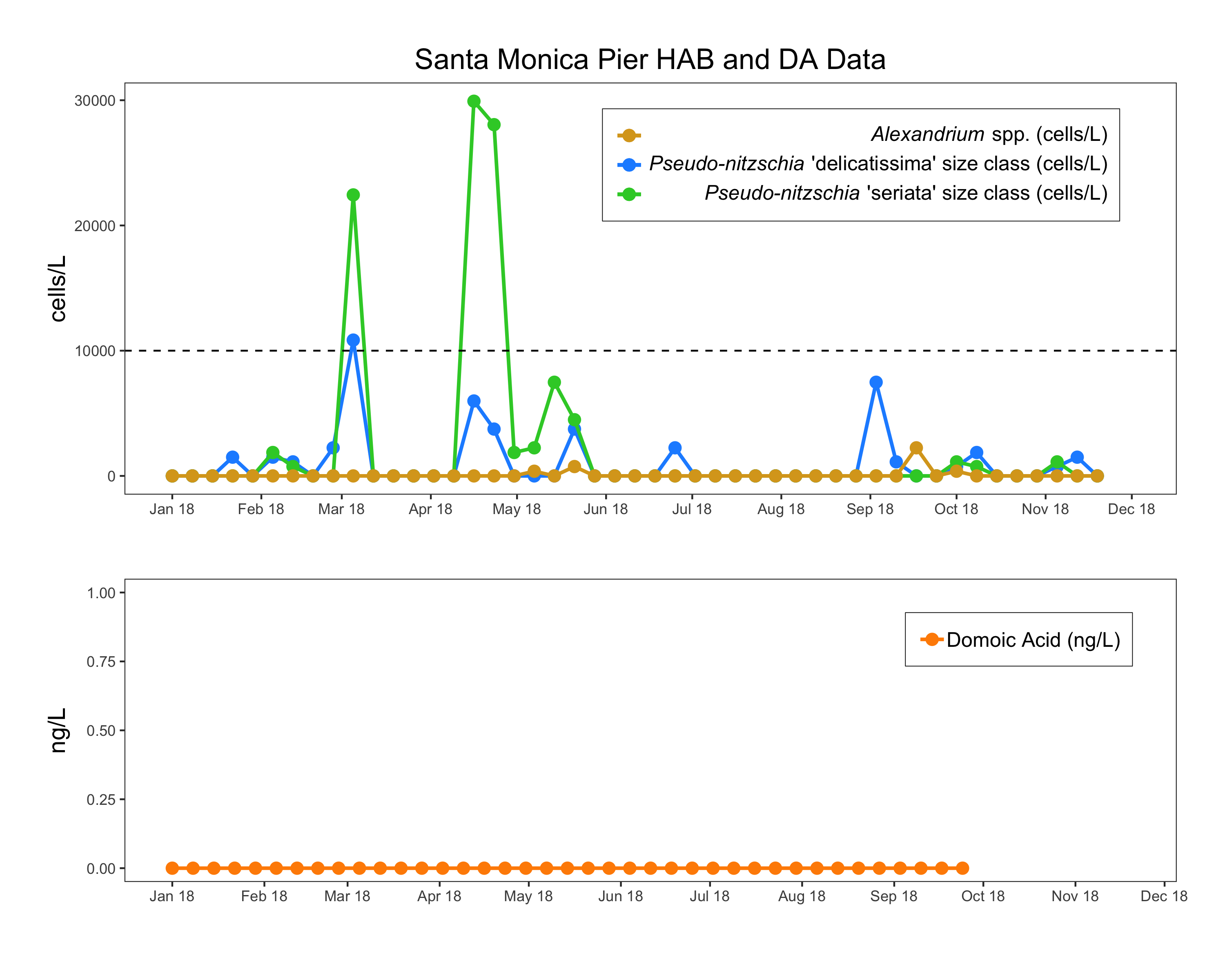
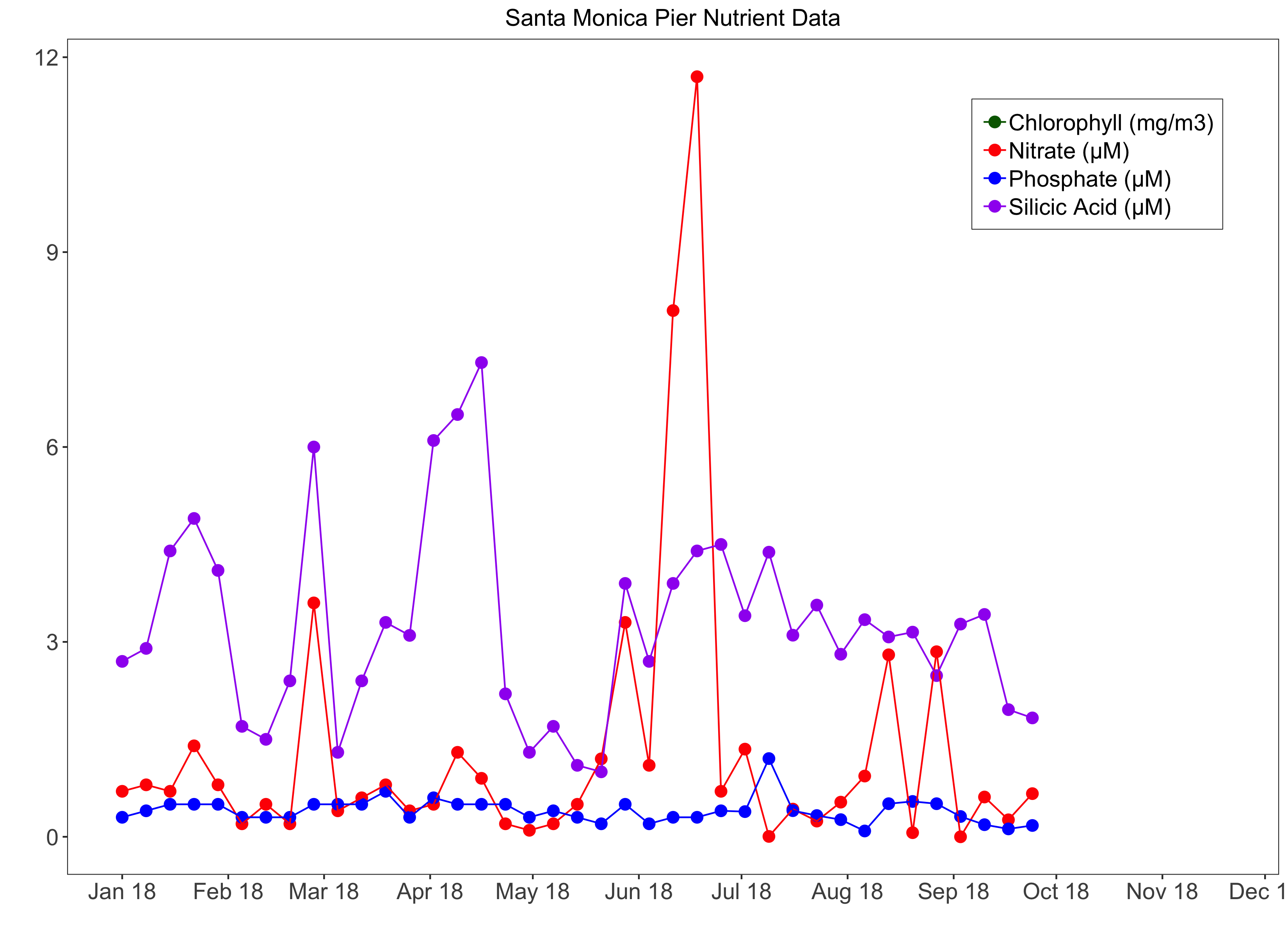
Newport Beach Pier
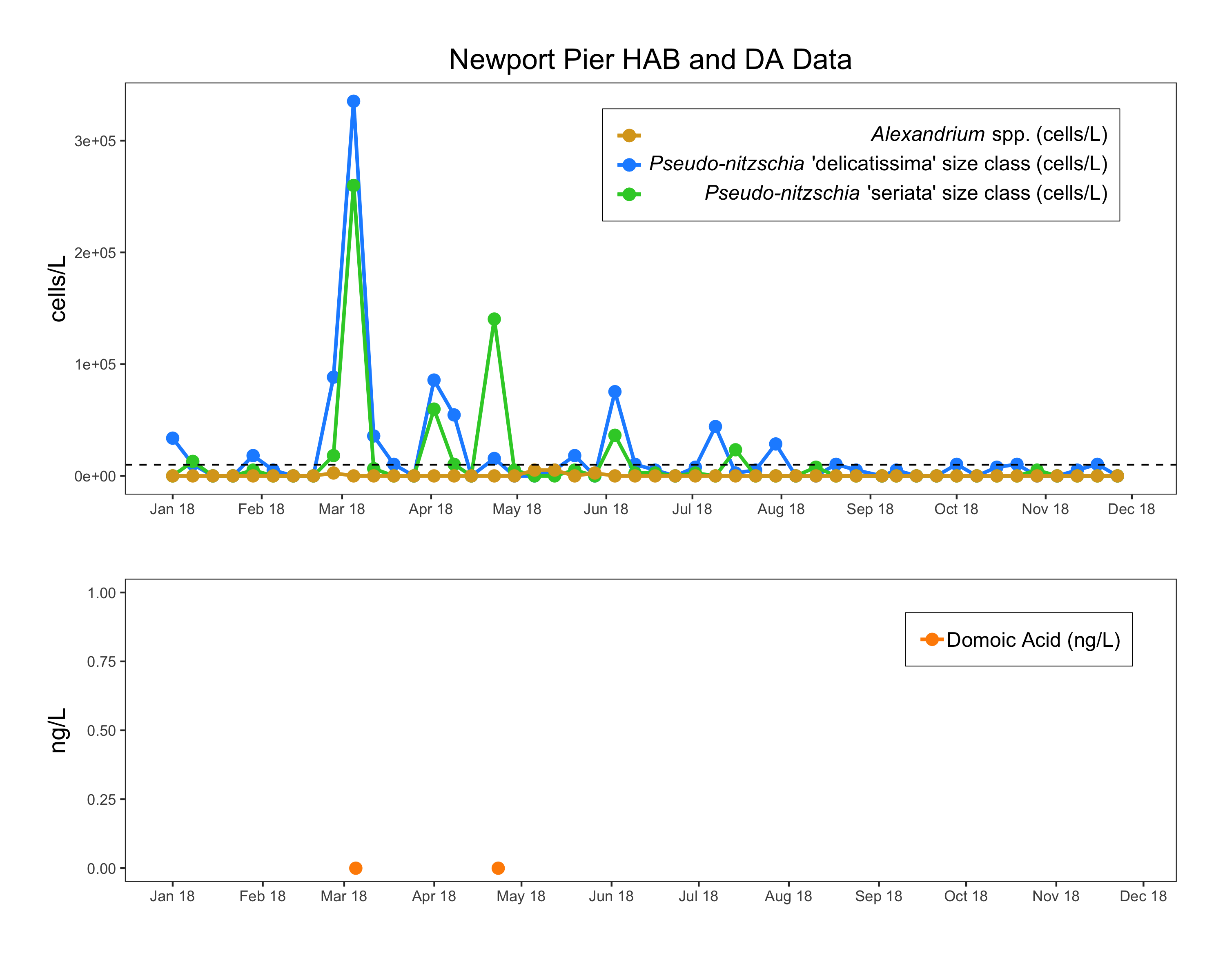
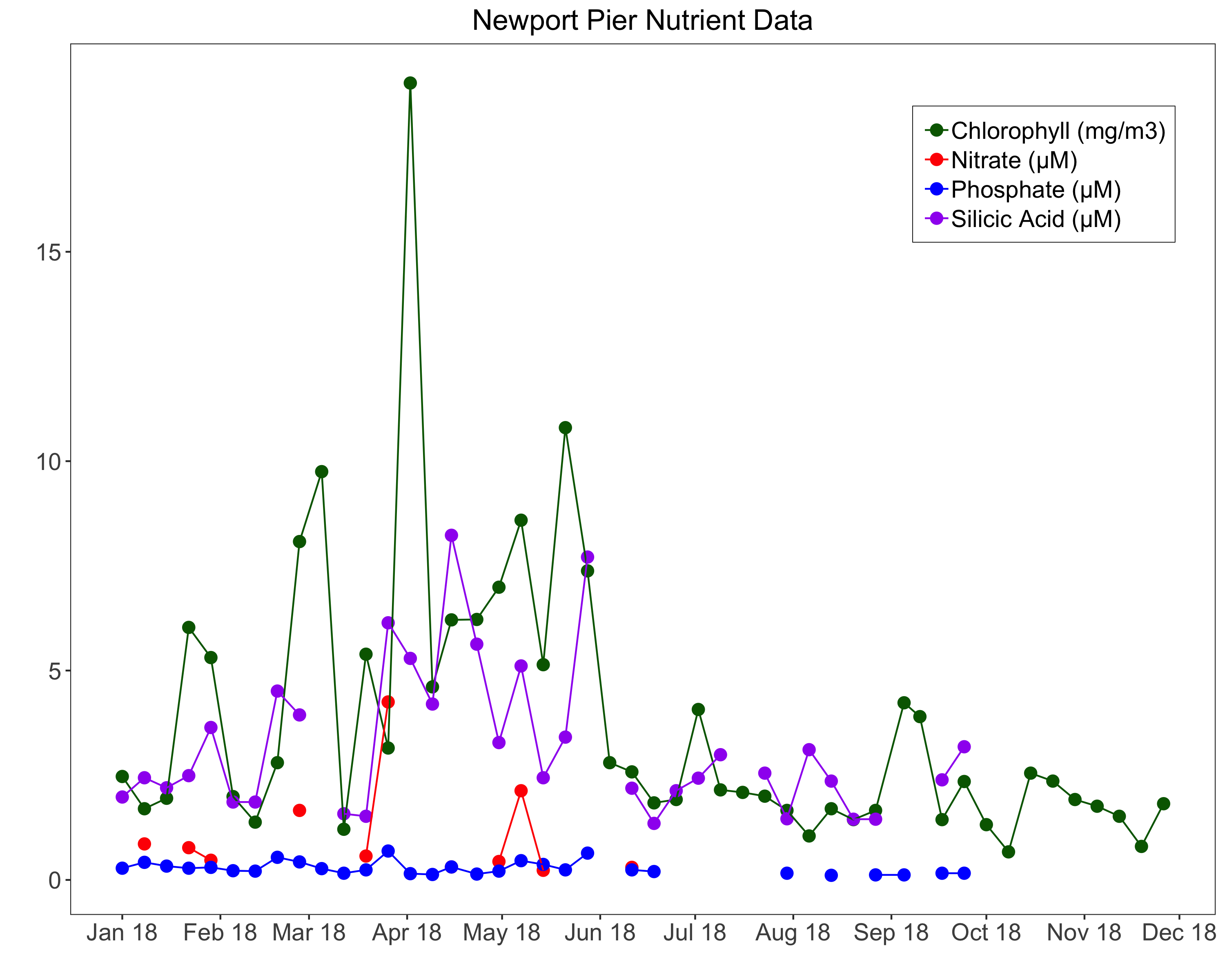
CDPH observations for Pseudo-nitzschia spp. and Alexandrium spp.
From 1-30 November 2018, water samples were collected by volunteers and sent to the California Department of Public Health (CDPH) for analysis. Pseudo-nitzschia spp. were detected in 34 of the 89 samples. Percent composition of Pseudo-nitzschia spp. was greatest on November 20th at Hunter Rock and November 1st at Port San Luis (30% and 11% composition respectively). Alexandrium spp. were detected at low levels (<1%) in 5 of the 38 sites sampled. You can also view CDPH weekly map layers of Pseudo-nitzschia and Alexandrium here.
Note the annual recreational mussel quarantine is no longer in effect. CDPH issues a health advisory in early November not to eat Dungeness crab viscera in state waters near Bodega Head and Russian River in Sonoma County. On November 18, CDPH lifted health advisories related to sport-harvested mussels, whole scallops, and clams (other than razor clams) in Del Norte and Humboldt counties.For the latest closures and updates, please visit the California Department of Fish and Wildlife (CDFW) Health Advisories page.
Data are provided by the California Department of Public Health, Environmental Management Branch.
November 2018
Pseudo-nitzschia spp. Percent Composition
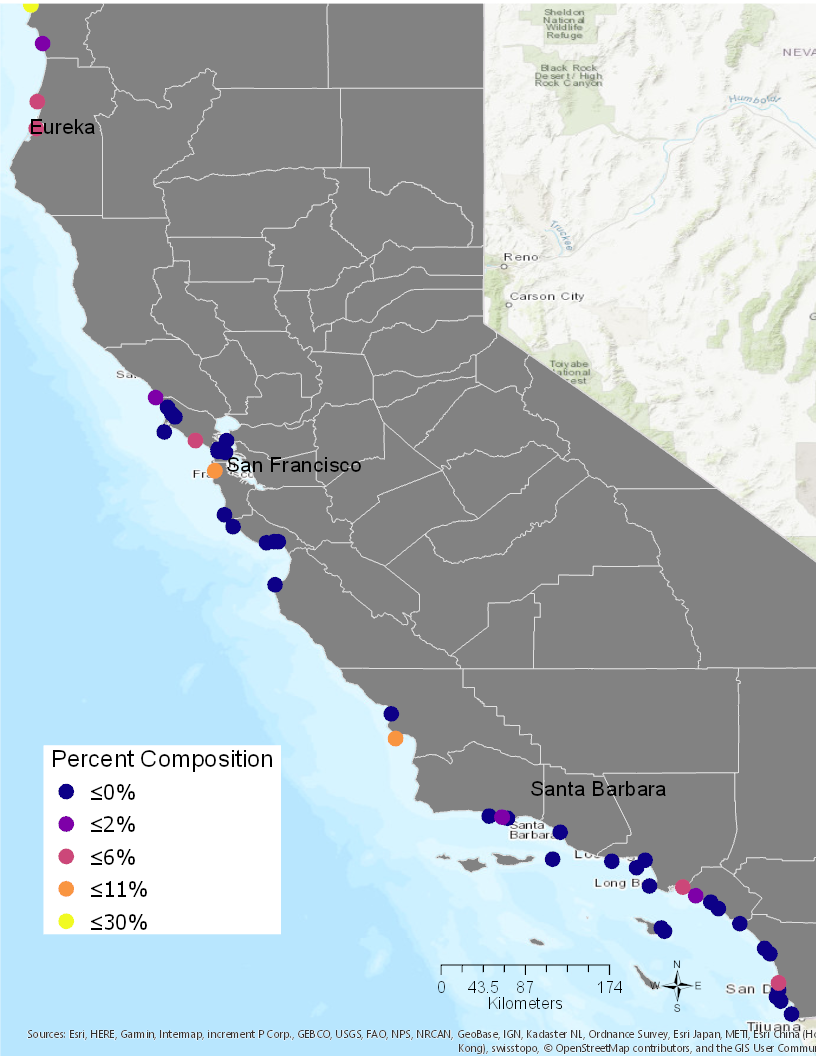
November 2018
Alexandrium spp. Percent Composition
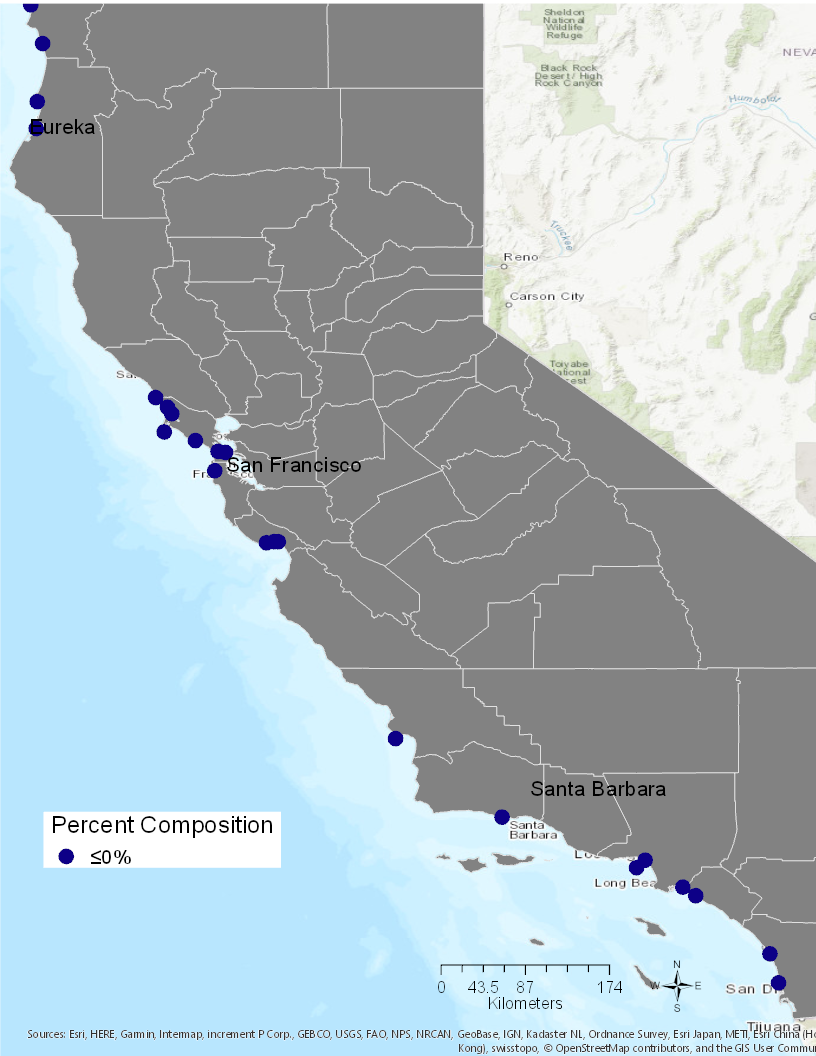
Central California Sea Lion Strandings from DA Toxicosis
The Marine Mammal Center in Sausalito, CA acts like an emergency room by working to rescue and rehabilitate sick and injured marine mammals, primarily California Sea Lions (Zalophus californianus). There have been a total of 88 sea lion strandings presenting with symptoms of domoic acid toxicosis since January 2018, with 4 sea lion stranding in the month of November.
No DA toxicosis cases have been reported by the Pacific Marine Mammal Center in 2018.
November sea lion strandings due to DA toxicosis occurred at the following locations:
- November 4th, 2018 - Dolan Rd, Moss Landing, Monterey
- November 7th, 2018 - Pescadero State Beach, Pescadero, San Mateo
- November 13th, 2018 - Coleman Beach, Morro Bay, San Luis Obispo
- November 17th, 2018 - Doran Beach Regional Park, Bodega Bay, Sonoma
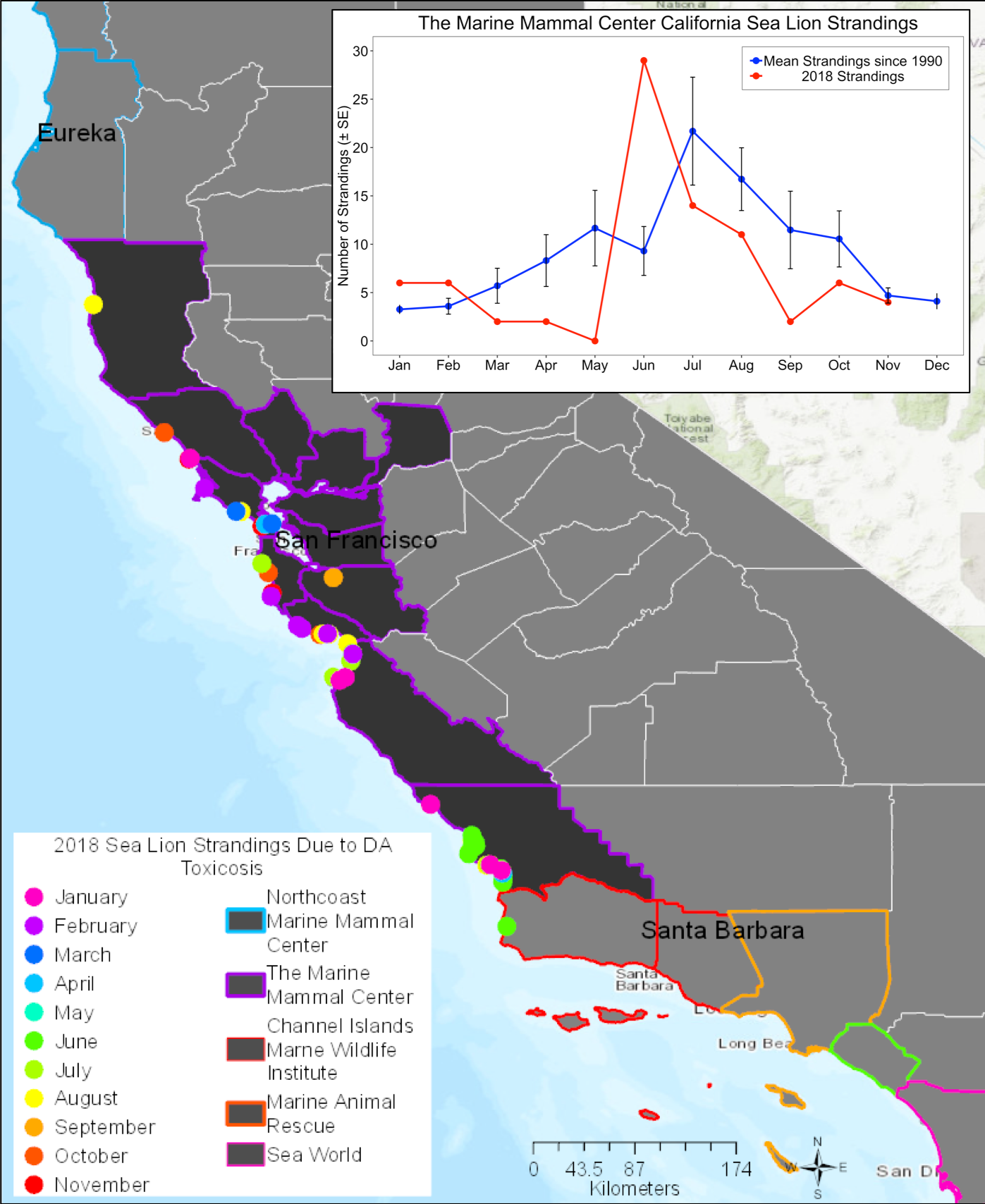
Who to call if you find a stranded marine mammal or sea turtle
Sea World of California (800) 541-7325
- San Diego County
Pacific Marine Mammal Center (949) 494-3050
- Orange County
Marine Animal Rescue (800) 399-4253 and California Wildlife Center (310) 458-9453
- Los Angeles County
Channel Islands Marine Wildlife Institute (805) 567-1505
- Santa Barbara County
- Ventura County
The Marine Mammal Center (415) 289-7325
- Alameda County
- Contra Costa County
- Marin County
- Mendocino County
- Monterey County
- Napa County
- Sacramento County
- San Francisco County
- San Luis Obispo
- San Mateo County
- Santa Cruz County
- Sonoma County
Northcoast Marine Mammal Center (707) 951-4722
- Del Norte County
- Humboldt County
